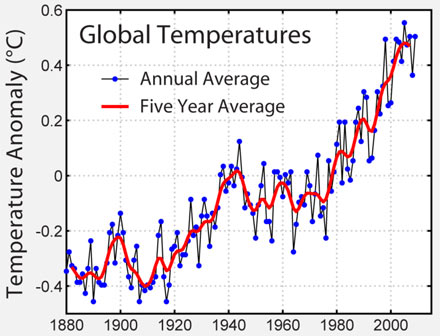Moving Beyond the Science: Five Ways to Reframe the Climate Narrative
Cammie Erickson
Before I started working on climate change, I considered it an environmental issue—tracking greenhouse gas emissions and measuring sea level rise—and not a social or economic one. I didn’t fully appreciate the impacts that it has on people, especially the most vulnerable.
My experience speaks to our collective failure to communicate about climate change in a way that motivates and empowers individuals and institutions to act. While the National Climate Assessment’s framing of climate change as a “global public health problem” is a step in the right direction, we still have a ways to go in creating climate narratives that resonate on a personal level. Climate change will not only raise temperatures, lead to an increase in intensity and frequency of storms, and affect sea-levels; it will also have devastating effects on homes, health, jobs, and human rights.
In July, BSR partnered with the Oak Foundation and the UN Foundation to convene more than 30 climate communications experts in Washington, D.C. We discussed how to move beyond communicating solely about the science of climate to create engaging narratives that inspire individuals, companies, and governments to take action. We gathered lessons from previous climate communications work, explored innovative developments in the climate communications field, and discussed alternative narratives that could resonate with a range of audiences—in both developed and developing economies.
Five lessons emerged from our discussion:
- Segment your audience: Not all people respond to the same framing, and tailoring narratives to different geographies or audiences will increase the effectiveness of these stories. While leading with climate science may work for some, a more people-centered approach will resonate better with others.
- Lead with solutions, not problems: People respond best when they feel they can contribute to solving a problem. Instead of leading with fear, climate communicators should paint a vision of a positive future—and how their work will help achieve that vision. In addition, they should experiment with new framing, such as positioning climate as a health or a human rights issue. This can spark interest from groups that might typically tune out environmental stories.
- Apply lessons from the science of communications: The climate community is in danger of repeating ineffective strategies but expecting different results. We need to learn from the science of communications and behavior change, not just the science of climate change, to build new, robust approaches.
- Learn from what’s worked in other successful campaigns: Other successful public-awareness campaigns—such as the anti-smoking campaign—can teach climate communicators how to move issues to the top of the political agenda and overcome special interests to galvanize broad-based public support.
- Choose your messengers wisely: It is not just the messages around climate change that need to be broadened, but also the diversity of messengers. Entire segments of the population are shut off from climate messaging because they fundamentally disagree with the current suite of messengers. Finding more communicators from conservative and faith-based groups will be important to broadening the constituency of action.
To truly move the needle on climate—with the ultimate goal of limiting temperature rise to 2˚C—we need to communicate the issue in a way that generates massive support and advances effective solutions that both reduce emissions and build adaptive capacity to inevitable climate impacts.
We invite you to join us and our partners as we tackle climate communications through our Business in a Climate-Constrained Worldinitiative and to continue this conversation in the session From Risk to Action: Effective Communications on the Climate Challenge at the 2014 BSR Conference this November in New York.
Image via Wikimedia Commons, CC BY-SA 3.0

